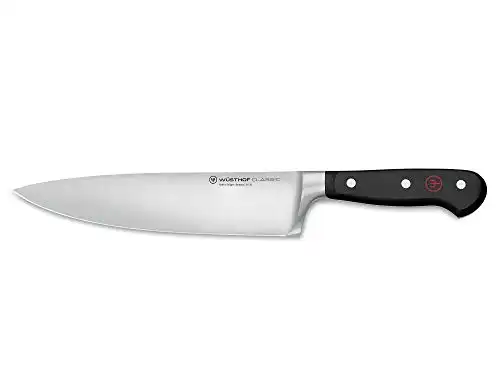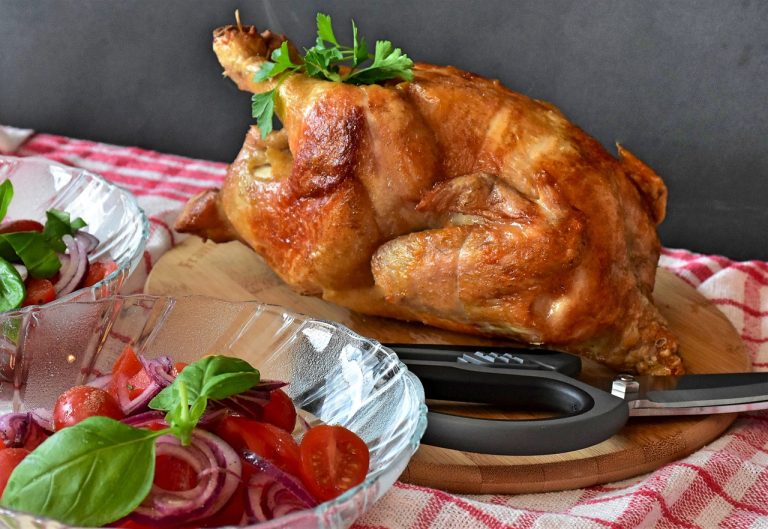5 Best Butchery Knives for Home Use to Improve Your Cooking Experience
Choosing the right butchery knife enhances home cooking with precise cuts, durability, and ease. Explore top picks for various tasks and learn essential care and safety tips for a seamless culinary experience.

Choosing the right butchery knife can transform your home cooking experience, making meal prep smoother and more enjoyable. Discover the top options that balance precision, durability, and ease of use.
Disclosure: As an Amazon Associate, this site earns from qualifying purchases. Thank you!
Understanding Butchery Knives

Knowing which butchery knives to use can transform your home cooking.
Types of Butchery Knives
- Chef’s Knife: Versatile for slicing, dicing, and chopping.
- Boning Knife: Ideal for separating meat from bone.
- Cleaver: Great for chopping through bones and thick cuts.
- Carving Knife: Perfect for slicing roasts and large cooked meats.
- Paring Knife: Best for small cuts and intricate work.
Benefits of High-Quality Knives
- Durability: High-quality knives last longer and don’t need frequent replacement.
- Precision: Sharp, well-made knives ensure clean cuts and better food presentation.
- Safety: Good knives are easier to control, reducing the risk of injury.
- Maintenance: Premium knives often require less maintenance, ensuring consistent performance with ease.
Factors to Consider Before Buying

Knife Material
Choose stainless steel for durability and ease of maintenance. Opt for high-carbon steel if you prefer sharper blades that stay sharp longer. Use Damascus steel for a combination of durability and sharpness with aesthetic appeal.
Handle Comfort
Prioritize ergonomic handles to reduce hand fatigue. Select materials like wood, plastic, or composite based on your grip preference. Look for non-slip features for added safety during use.
Blade Sharpness and Maintenance
Check for factory-sharpened blades to ensure immediate use. Keep a sharpening tool handy for regular maintenance. Choose blades with easy-to-maintain edges, such as those with a straight profile, to simplify honing and sharpening.
Top Picks for Home Butchery Knives
|
Best Overall
|
||
Choosing the right knife elevates your butchery game at home. Here are our top picks:
Best Overall Butchery Knife – Wüsthof Classic 8-Inch Chef’s Knife
This Wüsthof Classic 8-Inch Chef’s Knife offers a perfect balance of sharpness and durability. Crafted from high-carbon stainless steel, it ensures precise cuts, and its ergonomic handle reduces fatigue. It’s versatile, supporting various butchering tasks effortlessly.
Best Budget Butchery Knife – Victorinox Fibrox Pro 8-Inch Chef’s Knife
Affordable yet efficient, this Victorinox Fibrox Pro 8-Inch Chef’s Knife features a stainless steel blade that stays sharp for extended use. The textured handle provides an excellent grip, making it safe and easy to use. Ideal for beginners needing quality on a budget.
Best Premium Butchery Knife – Shun Classic 6-Inch Boning Knife
This Shun Classic 6-Inch Boning Knife, forged from Damascus steel, delivers unmatched sharpness and edge retention. Its D-shaped handle fits comfortably in your hand, giving you control in delicate butchery tasks. It’s perfect for those seeking superior performance.
How to Care for Your Butchery Knives
Properly caring for your butchery knives ensures they last longer and perform better. Here are some essential tips to keep your knives in top shape.
Cleaning Tips
Always hand wash your knives. Use warm water, mild detergent, and a soft sponge. Avoid dishwashers as they can damage the blade and handle. Rinse thoroughly. Dry immediately with a clean towel to prevent rust and stains.
Sharpening Techniques
Regularly hone your knives with a honing steel to maintain their edge. For a more thorough sharpening, use a whetstone. Hold the blade at a 20-degree angle and slide it across the stone, alternating sides. Electric sharpeners can be used, but ensure they are appropriate for your knife’s material.
Safe Usage Tips for Butchery Knives at Home

Proper Handling
Hold the knife with a firm grip. Always keep your fingers away from the blade. Cut on a stable surface to prevent slips. Slice away from your body and never try to catch a falling knife.
Storage Solutions
Store knives in a knife block or magnetic strip. Use blade guards if stored in a drawer. Avoid leaving knives loose to prevent accidents and blade damage. Clean and dry knives before storage to maintain sharpness and hygiene.
Frequently Asked Questions
What is the best type of knife for home butchery?
The best type of knife depends on your specific needs. For general use, a Chef’s Knife is versatile and durable. For more specialized tasks, consider a Boning Knife for precision, a Cleaver for cutting through bones, a Carving Knife for slicing meat, and a Paring Knife for detailed work.
What material is best for butchery knives?
Stainless steel, high-carbon steel, and Damascus steel are popular materials. Stainless steel offers durability and resistance to rust, high-carbon steel provides excellent sharpness, and Damascus steel is renowned for its strength and unique pattern.
How should I care for my butchery knives?
To care for your butchery knives, hand wash them with mild detergent and avoid using dishwashers. Hone the blade with a steel regularly and sharpen using a whetstone. Ensure electric sharpeners are suitable for the knife’s material.
Can I use a dishwasher to clean my butchery knives?
No, it’s best to avoid dishwashers as they can damage the blade. Instead, hand wash your knives with mild detergent and dry them immediately to maintain their quality.
What is the proper way to use a butchery knife safely?
Hold the knife with a firm grip, cut on a stable surface, always slice away from your body, and store knives in knife blocks or use blade guards. This helps prevent accidents and keeps the knives sharp and hygienic.









